The Box and Goodies -
As you might imagine the PowerSquid did not come in an actual box. Instead it comes in a plastic clamshell style casing that leaves the plug ends dangling down (which helps give the product its name).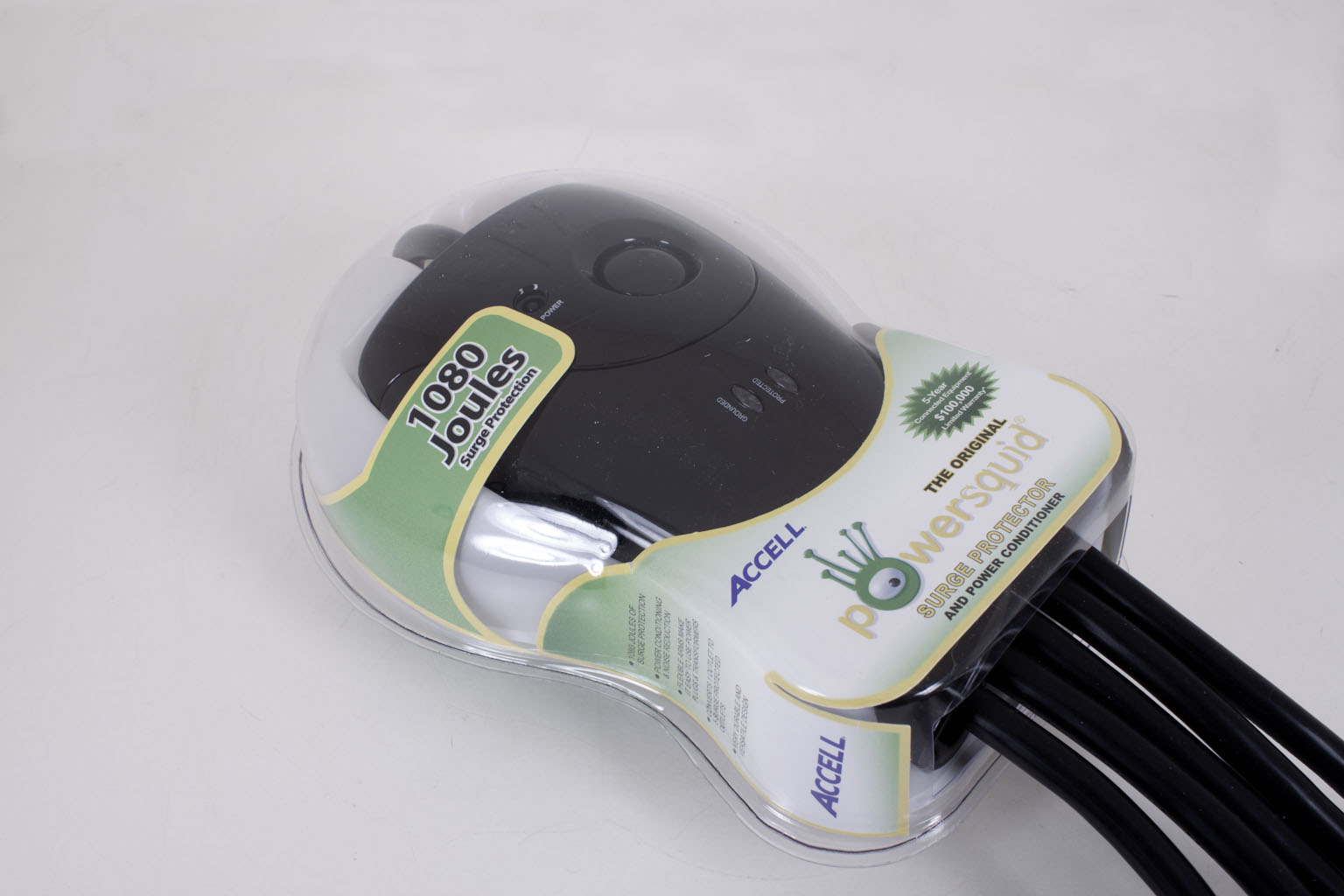
On the front of the packaging Accell has put the rating for the surge protection side in large friendly letters. You get a respectable 1080 Joules [http://en.wikipedia.org/wiki/Joule] of protection in the event of a high-level surge the device will die instead of your hardware. 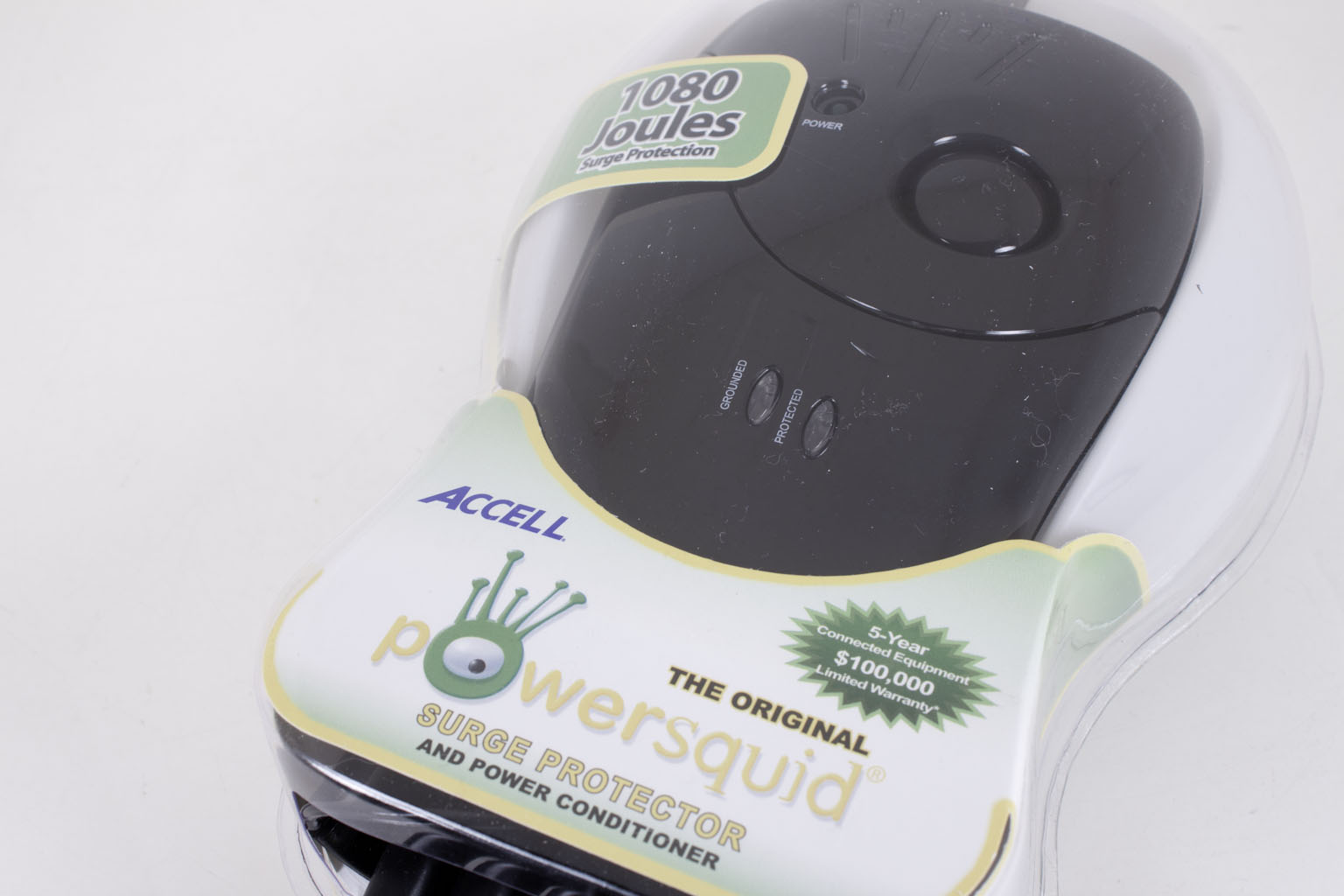
On top of the basic surge protection you also are getting a nice feature that is almost unheard of in power strips or even surge protectors, Accell has built in line conditioning into the PowerSquid. Accell also warrants (limited warranty) up to $100,000 of your hardware in the event of a surge. 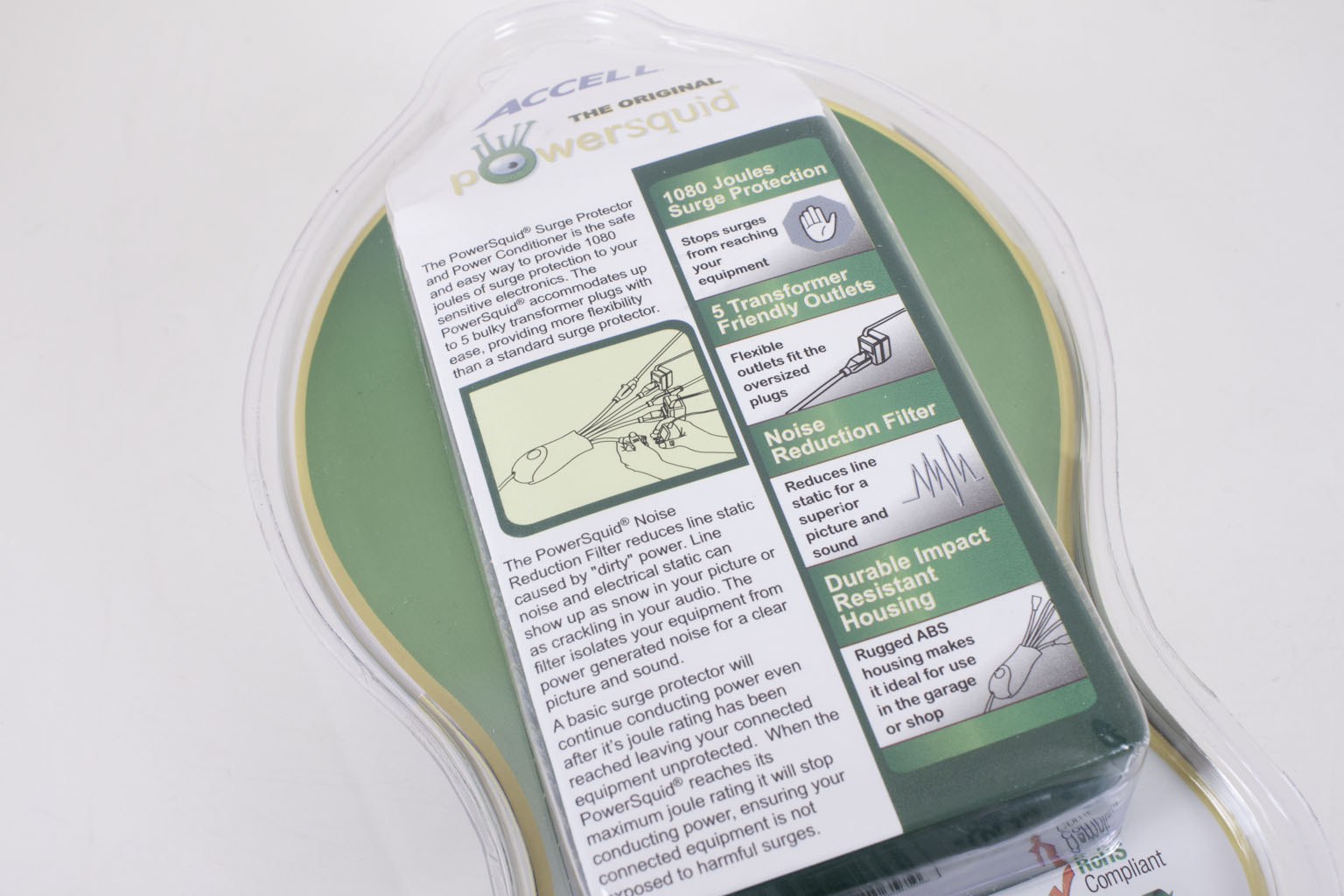
There is really not that much more to the packaging, but then again you would not buy this product for the box it comes in.
The Accell PowerSquid Surge Protector -
The PowerSquid is built using impact resistant ABD plastic. It has five grounded outlets that extend off of individual cables so you could attach power blocks on each one without any problems (this is a nice feature over flat products). The body of the Squid has a large recessed power/breaker button that does help with accidental power cycling. The amount of force needed to cycle power is enough to prevent causal contact but not to make it difficult to turn off and on. This scores big points over the typical rocker switch that can be shut off with a misplaced toe.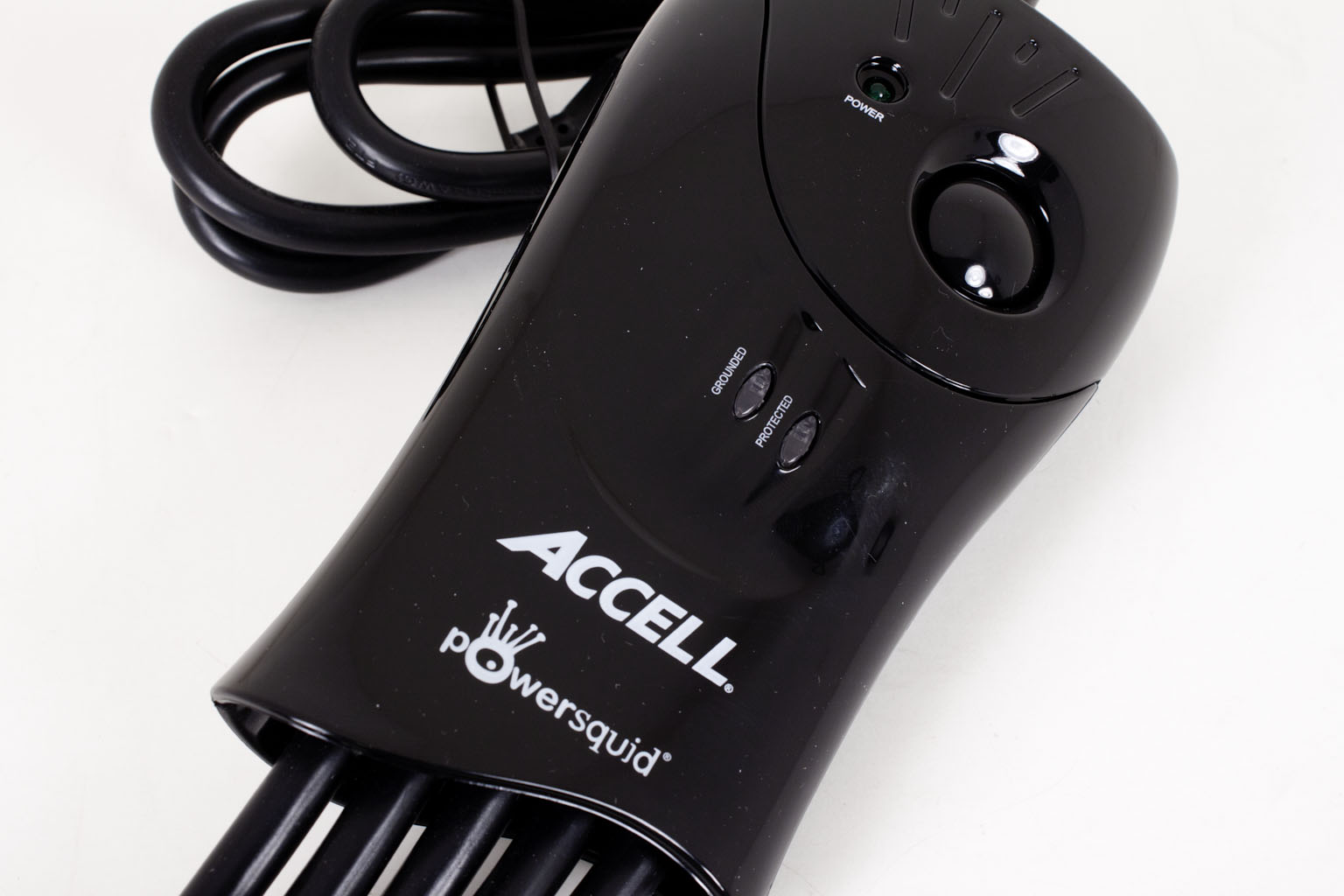
The surge protection on the PowerSquid is good. It can take a maximum power spike of 72,000 Amps while it is able to dissipate the 1080 Joules that we talked about before. In many cases you find devices that list high current and energy protection, but the protection devices are relatively slow to respond. This is not the case with the PowerSquid. Here the protection will clamp down in less than 1ns (that is one nano second or one billionth of a second). To help prevent power surges the PowerSquid has a resettable 15 Amp breaker. Now this is not going to help you if that 72,000 amp spike hits (that much current will often melt or fuse breakers close so the current just jumps over), but is nice for low level surges.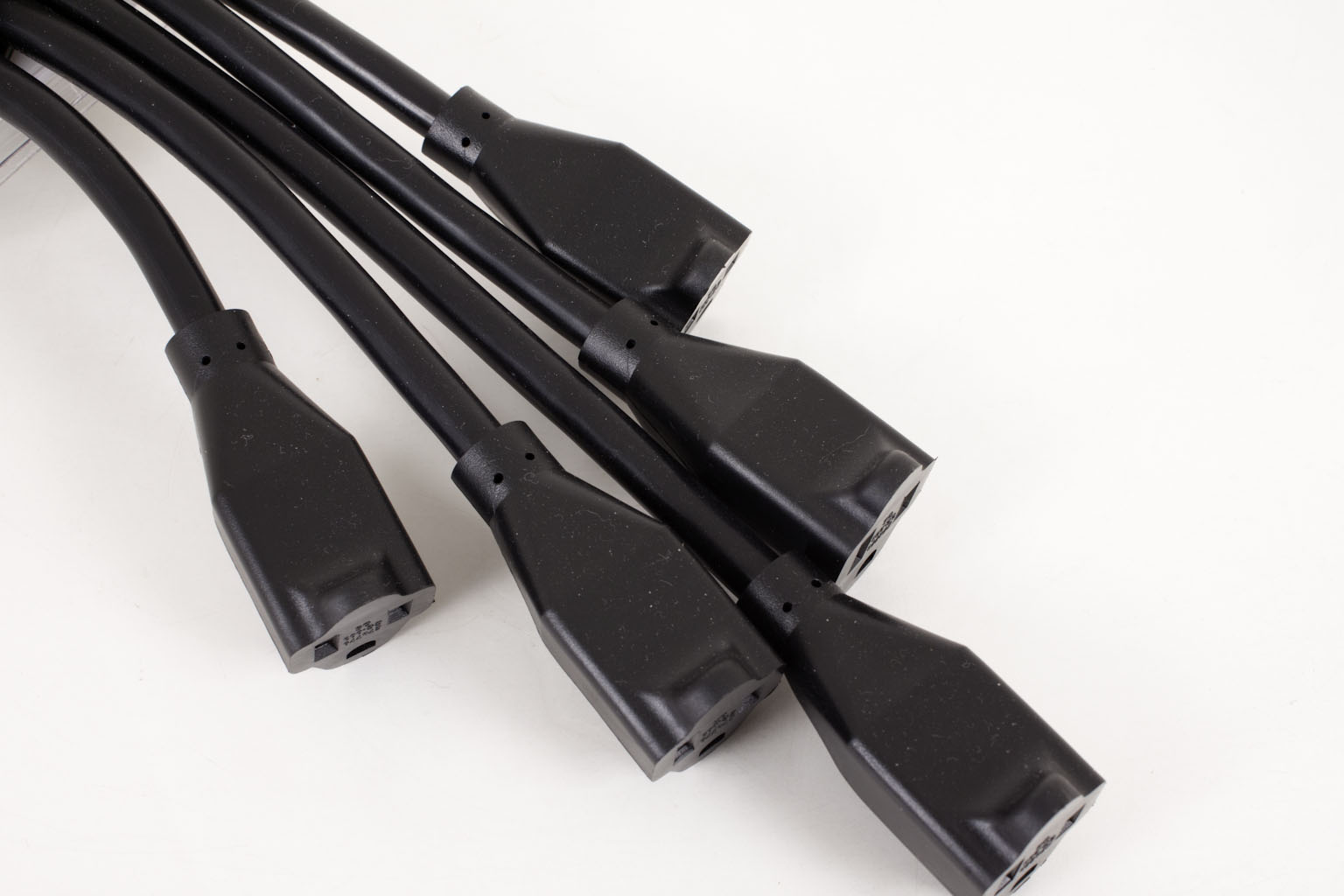
The line filtering in the PowerSquid will also come in handy as it can clean up many normal power issues and is rated up to 40db of line noise between 150 KHz to 100 MHz.
Performance -
Performance of a power strip, surge protector or line conditioner is not an easy task. You really have to have something that can show this off (all without killing the product). As we did not want to damage our PowerSquid we did not have the chance to test out the max spike or energy dissipation limits (we also have no way to generate 1080 Joules or 72,000 AMPs at the present time). However we were able to directly test the line conditioning and low level spike issues.
We have an old PSU that when powered on will spike back down the line and pop most 15 AMP breakers. This PSU was actually hit by a low-level surge itself which is why it can do this. We rigged it up to an separated line on its own 15 Amp breaker and plugged both it and the Power Squid into the dual outlet. As soon as we powered on the PSU both the line breaker and the breaker on the PowerSquid popped, but none of the devices plugged into the PowerSquid did (there were four test breakers rated at 7.5 Amps. If any current has passed through at least one of these would have shown a fault after we powered the PowerSquid back on.
For line conditioning we had another winner. For our audio testing we use a Tech On Model “55” Tube Amplifier. On unfiltered power this has a nasty pop and hiss in it that occurs as the power fluctuates. When we plugged the Model “55” into the PowerSquid the popping disappeared entirely even during extended usage. The power filtering also helped to remove a slight strobe effect that was noticeable in our studio lighting.
Overall and with the exception of the max spike and energy dissipation limits the PowerSquid performed exceptionally well.
Value -
Value is another very subjective topic. What is expensive to some might be a deal to others. You can look at this topic in multiple ways. One is raw price and the other is what you get for the money. Each is accurate and both are correct ways to look at price/value. We tend to look at features, performance and real-property when we discuss value. However, we also take into account the raw cash cost of the item. Judging the value of a Surge Protector like the PowerSquid is not a simple thing. Too many people are of the opinion that a power strip at $20 is the same thing as a Surge Protector costing $50 or $60. Fortunately the Accell PowerSquid will not set you back $50 or even $40; in fact you can pick one up for around $35.00. We have even seen reference to them at Home Depot so you will not have to order one online and then pay extra to have it shipped to you. When you compare what you get from the Accell PowerSquid to the average power strip it is not hard to see which one is the better value (hint it is the PowerSquid).
Conclusion -
The Accell PowerSquid is a nice piece of hardware even if you only look at it from the stand point of how easy it is to use. After getting annoyed at multiple flat, linear power strips it is nice to have flexible cables to plug things into. The recessed power/breaker button is a handy little feature if this in on the floor under a desk. After working with multiple companies where the battery backup or power strip is just laid under the desk I can attest to how easy it is for s user to power something off by accident. Added to these simple features you have excellent line conditioning and protection for your expensive hardware all with a $35 price tag. It is not hard to see why you might want to pick one of these up when you are looking for your next “power strip”.
Discuss this in our Forum